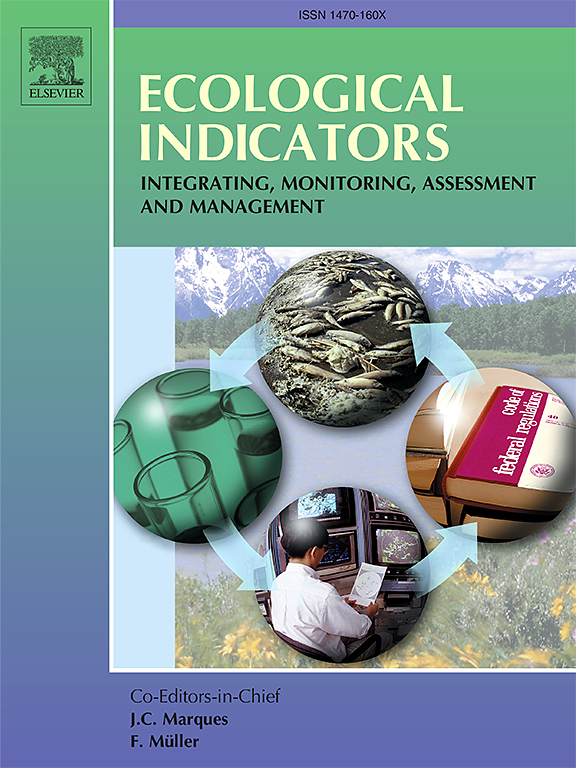全球洞察生物炭在减轻抗生素耐药基因中的作用:关键特性和研究趋势
IF 7
2区 环境科学与生态学
Q1 ENVIRONMENTAL SCIENCES
引用次数: 0
摘要
抗生素耐药基因作为一种微量污染物,已成为全球性和持续性的挑战,威胁着生态系统和人类健康。目前,使用绿色方法(如生物炭)减轻ARGs的研究显著增加。本研究通过对2011年以来864篇相关出版物的文献计量学分析,全面综述了生物炭在不同环境下对抗生素和ARGs的影响。值得注意的是,就发表论文而言,中国已成为主要贡献者,其次是美国和澳大利亚。通过合作作者网络分析,我们确定了434个参与该领域的不同机构。在关键词的多重对应分析中,我们确定了三个主要集群,重点是了解生物炭与微生物群落之间的生物和化学相互作用,生物炭的高级氧化工艺和特定化学剂的使用以及生物炭在环境修复中的应用和改性。通过关键词的主题演化分析,我们发现,近12年来,研究主题从早期检测生物炭对抗生素生物利用度的影响程度以控制ARG转变为生物炭/改性生物炭作为解决抗生素耐药性的环境应用。此外,我们还深入讨论了该领域在水、土壤和好氧厌氧环境下的国际研究现状,并重点介绍了生物炭的机理和改性技术。总的来说,本研究具有重要的价值,为这一快速发展的领域的未来研究人员提供了重要的参考点,并提供了新的有价值的视角和方向。本文章由计算机程序翻译,如有差异,请以英文原文为准。
Global insights into the role of biochar in mitigating antibiotic resistance genes: Key properties and research trends
Antibiotic resistance genes (ARGs), one of micro-pollutant, has become a global and persistent challenge, threatening ecosystems and human health. Currently, there has been a significant increase in research on using green methods, such as biochar, to mitigate ARGs. This study provides a comprehensive review of the influence of biochar on antibiotics and ARGs in various environmental contexts through a bibliometric analysis of 864 related publications since 2011. Notably, China has emerged as leading contributor in terms of published papers, followed by the United States and Australia. Through co-authorship network analysis, we identified 434 different institutions that participated in this field. In the multiple correspondence analysis of keyword, we identified three main clusters focusing on the importance of understanding the biological and chemical interactions between biochar and microbial communities, the use of advanced oxidation processes and specific chemical agents on biochar and the application and modification of biochar for environmental remediation. By thematic evolution analysis of the keywords, we observed that research topics have shifted from the early detection of what extent could biochar influence antibiotic bioavailability for ARG control, to the environmental applications of biochar/modified biochar as solution to address antibiotic resistance in recent 12 years. Furthermore, we conducted an in-depth discussion on the current international research status of this field in water, soil and aerobic anaerobic context, and also highlighted the mechanisms and modification technologies of biochar. Overall, this study holds significant value, serving as an important reference point and offering new and valuable perspectives and directions for future researchers in this rapidly advancing field.
求助全文
通过发布文献求助,成功后即可免费获取论文全文。
去求助
来源期刊

Ecological Indicators
环境科学-环境科学
CiteScore
11.80
自引率
8.70%
发文量
1163
审稿时长
78 days
期刊介绍:
The ultimate aim of Ecological Indicators is to integrate the monitoring and assessment of ecological and environmental indicators with management practices. The journal provides a forum for the discussion of the applied scientific development and review of traditional indicator approaches as well as for theoretical, modelling and quantitative applications such as index development. Research into the following areas will be published.
• All aspects of ecological and environmental indicators and indices.
• New indicators, and new approaches and methods for indicator development, testing and use.
• Development and modelling of indices, e.g. application of indicator suites across multiple scales and resources.
• Analysis and research of resource, system- and scale-specific indicators.
• Methods for integration of social and other valuation metrics for the production of scientifically rigorous and politically-relevant assessments using indicator-based monitoring and assessment programs.
• How research indicators can be transformed into direct application for management purposes.
• Broader assessment objectives and methods, e.g. biodiversity, biological integrity, and sustainability, through the use of indicators.
• Resource-specific indicators such as landscape, agroecosystems, forests, wetlands, etc.
 求助内容:
求助内容: 应助结果提醒方式:
应助结果提醒方式:


